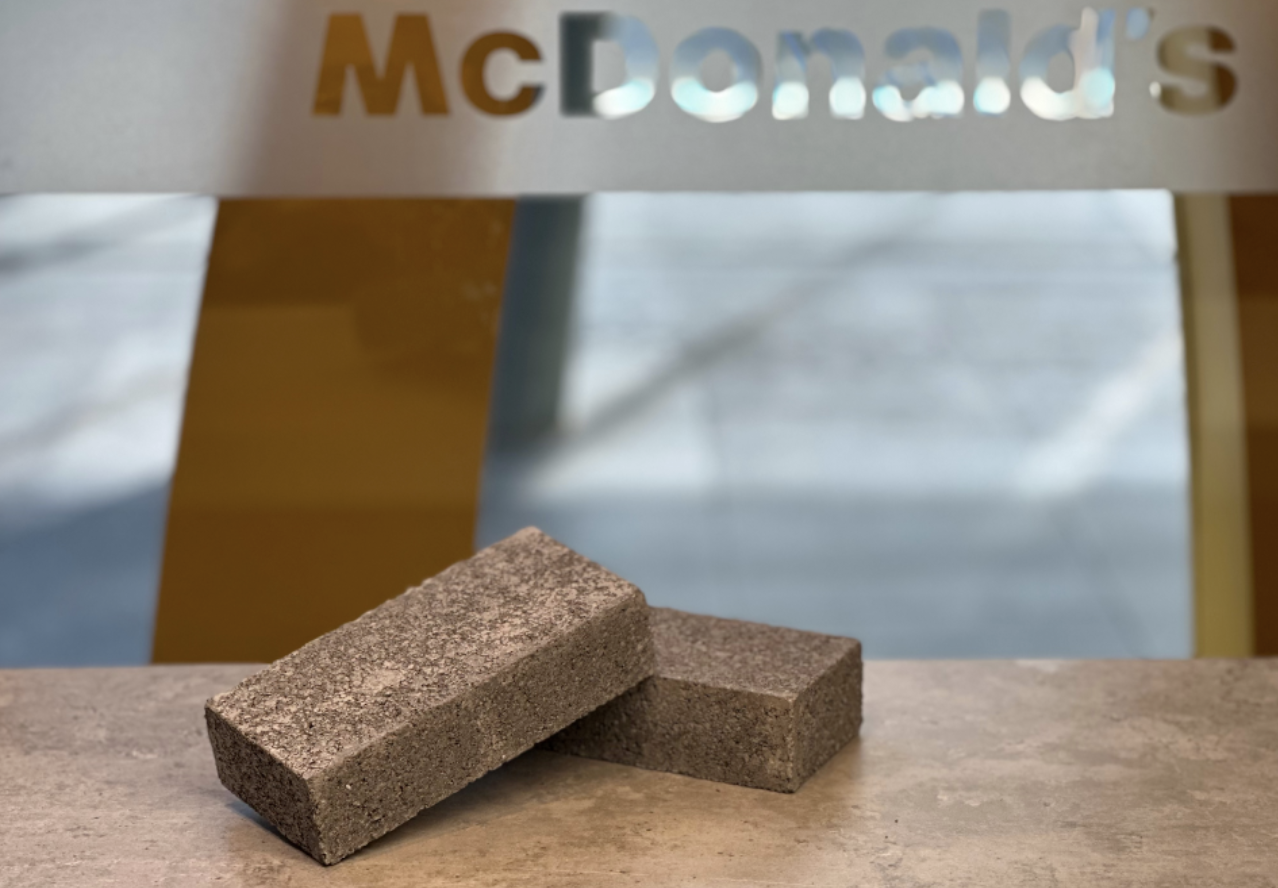A Breakthrough in Sustainable Construction: Bricks that Actually Store Carbon
The way we build our cities is shaping our climate.
Building and construction are essential for economic growth and modern living, but they come at a cost. According to the UN Environment Programme, the industry accounts for nearly 40 percent of global CO₂ emissions—more than any other sector.
While reducing emissions from heating, cooling, and lighting is important, it’s only part of the solution. The materials we build with—concrete, steel, and bricks—come with an environmental cost. To fight climate change, we must not only reduce emissions but also remove CO₂ from the atmosphere – and one possible solution is already being tested in southern China.
Carbon-Storing Bricks: McDonald’s China is paving the way for greener construction
A McDonald’s China restaurant in Shenzhen is serving up more than just burgers and fries; it’s showcasing a groundbreaking solution in the fight against climate change. Here, a wall is built from carbon-sequestering bricks, which are also more sustainable to produce than traditional bricks.

Developed by Clean CO₂, a green-tech startup backed by Tencent’s CarbonX Program, in collaboration with McDonald’s China, these bricks show that it’s possible to offset the emissions produced by construction by changing the way we make core materials. Unlike conventional bricks, which require high-temperature kilns that burn fossil fuels and pollute the environment, these carbon-storing bricks are produced without firing, using a blend of gel materials, aggregates, and captured CO₂ waste.
Through a chemical reaction, minerals like calcium and magnesium in the concrete can permanently convert CO₂ into solid crystals, drawing the carbon out of the atmosphere and locking it away.
The impact is encouraging, with a 23 cubic meters carbon-storing brick wall at the McDonald’s China outlet in Shenzhen capable of storing 380 kg of CO₂, equivalent to what a palm tree absorbs over 37 years.
Although the wall is a demonstration project, this technology could have a major impact on the construction industry if widely adopted, turning buildings into carbon storage solutions instead of emissions sources.

CarbonX: bringing emerging climate technologies into the real world
The carbon-storing bricks are just one example of how CarbonX is working with industry, investment, and ecosystem partners to transform cutting-edge climate innovation into real-world solutions that can help people reach net zero by 2050.
The CarbonX Program, which Tencent launched in 2023, is committed to supporting climate-tech startups, researchers, industry leaders, and investors in scaling breakthrough low-carbon technologies. By providing funding, commercialization support, and global partnerships, CarbonX helps move emerging climate solutions from the lab to large-scale deployment.
CarbonX Program 2.0: call for applications worldwide
Following the success of its first phase, CarbonX Program 2.0 is now expanding globally, and will provide tens of millions of dollars to support innovations in:
- Carbon Dioxide Removal (CDR): Developing technologies to permanently remove CO₂ from the atmosphere.
- Long-Duration Energy Storage (LDES): Enhancing the reliability of renewable energy storage.
- Carbon Capture, Utilization, and Storage (CCUS) for the Steel Industry: Exploring how to decarbonize this vital yet hard-to-abate industry.
- CarbonXmade (CCU): Integrating captured carbon into chemical production and consumer products through the CarbonXmade consortium.
Are you developing a game-changing climate-tech solution?
Apply for CarbonX Program 2.0 today and be part of the next wave of climate innovation!


